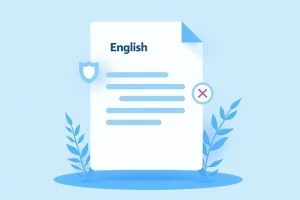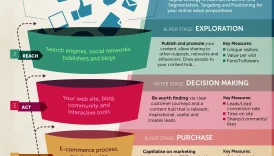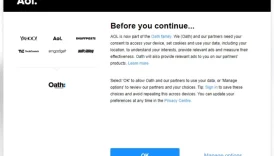English content: Simplify Your Copy Without Translation

- English content: Simplify Your Copy Without Translation
- English content optimization: Essential SEO strategies for 2025
- No Translation Required: Keeping Your English Copy Clean and Crisp
- Localization vs Translation: How to Choose the Right Approach for English Audiences
- English Copywriting Tips: Crafting Clear, Persuasive Web Text
- Web Content in English: Designing for Readability and Engagement
- Keyword Research for English Content: Using LSI to Boost Relevance
- On-Page SEO for English Pages: Meta Tags, Headings, and Structure
- Voice and Tone in English Content: Aligning with Your Brand
- Local SEO Considerations in English: Reaching Local Audiences
- Measuring Success: Metrics for English Content Performance
- Frequently Asked Questions
- What is English content optimization and why is it important for SEO?
- When is no translation required for English web content, and how does that affect your localization strategy?
- Localization vs translation: how do they differ for English web content and SEO?
- What are some English copywriting tips to improve engagement in web content in English?
- How can I optimize metadata and on-page elements in English content optimization for better search visibility?
- What role does web content in English play when targeting a global audience who may not require translation?
- How should I balance keyword density and LSI terms in English content optimization?
- Summary
The content is already in English; no translation is needed. This setup makes it easier to focus on English content optimization and to improve clarity for global audiences by ensuring consistent terminology, readable typography, and accessible structure that supports search engines and readers alike. We can apply a practical standard where no translation required is the norm for core pages, streamlining updates, reducing maintenance overhead, and ensuring consistency across regional versions where needed. Gauging SEO basics, including keyword mapping, meta details, and internal linking, ensures the framework aligns with search intent and user expectations across devices and locales, while supporting crawlability and accessibility. For a strong start, ensure your web content in English is engaging, fast-loading, accessible to assistive technologies, and tuned for audience needs across different channels and contexts across campaigns and landing pages.
From an LSI perspective, the topic can be framed using language strategy, content localization, and the distinction between localization and translation. Think about refining messaging for English-speaking audiences through tailored phrasing, tone, and cultural cues. This approach uses search-relevance signals by linking semantically related terms like English-language copywriting, metadata optimization, and audience-centric editorial guidelines. By focusing on semantic relationships rather than exact keyword stuffing, you create a more natural reader experience while keeping SEO in mind. Ultimately, the goal is to serve high-quality content in English that answers user intent while supporting global visibility.
English content optimization: Essential SEO strategies for 2025
Effective English content optimization begins with understanding user intent and aligning it with search queries. Structure content with clear headings, short paragraphs, and engaging meta descriptions to boost readability and dwell time.
For sustained relevance, weave related terms naturally: the concept of web content in English, no translation required, and a thoughtful approach to localization vs translation. This helps search engines establish topical authority while keeping readers engaged.
No Translation Required: Keeping Your English Copy Clean and Crisp
When content stays in English, the optimization workflow benefits from reduced localization overhead and consistent brand voice. This approach simplifies QA and ensures faster updates across pages.
However, maintain accessibility and clarity by using active voice, descriptive alt text, and legible typography. This aligns with English copywriting tips and improves user experience, especially during frequent updates. No translation required.
Localization vs Translation: How to Choose the Right Approach for English Audiences
Understanding the difference between localization and translation is essential when targeting English-speaking markets. Localization adapts culture, currency, date formats, and idioms for local relevance.
When deciding between localization vs translation, weigh audience expectations, budget, and long-term goals. A thoughtful mix can preserve brand voice while boosting resonance.
English Copywriting Tips: Crafting Clear, Persuasive Web Text
English copywriting tips emphasize clarity, benefit-led language, and scannable formatting. Focus on headlines that promise value and body copy that answers user questions.
Leverage storytelling, social proof, and concise calls-to-action to drive engagement, while maintaining consistency with brand voice and SEO basics like keyword placement.
Web Content in English: Designing for Readability and Engagement
Design and content work together to keep readers on the page. Use short sentences, active voice, and well-structured paragraphs to improve readability for web content in English.
Incorporate multimedia thoughtfully, optimize image alt text, and ensure fast load times to support SEO and user satisfaction.
Keyword Research for English Content: Using LSI to Boost Relevance
Effective keyword research for English content goes beyond single keywords—explore related terms and semantic connections that reflect user intent.
Apply LSI signals by grouping terms such as ‘content optimization’, ‘SEO’, ‘web writing’, and ‘local search’ to build topical depth and improve rankings.
On-Page SEO for English Pages: Meta Tags, Headings, and Structure
Structure on-page elements with clear H1s, descriptive meta descriptions, and accessible URLs. These practices support search engines and readers for English pages.
Ensure internal linking, schema markup where appropriate, and alt text for images to reinforce relevance and accessibility.
Voice and Tone in English Content: Aligning with Your Brand
Define a consistent voice and tone that reflects brand values across all pages. This anchors trust and improves user engagement.
Adapt the voice to different contexts—product pages, blog posts, and support content—while keeping core messaging aligned with English content optimization goals.
Local SEO Considerations in English: Reaching Local Audiences
Tailor content to regional spellings, currency formats, and local references to improve relevance in English-speaking communities.
Leverage local business data, reviews, and localized landing pages to boost visibility in local search results while maintaining cohesion with global branding.
Measuring Success: Metrics for English Content Performance
Track engagement metrics, conversion rates, and time-on-page to assess the impact of your English content. Use A/B testing to refine headlines and CTAs.
Regular audits of readability, keyword coverage, and link structure help sustain improvements in SEO and user experience for web content in English.
Frequently Asked Questions
What is English content optimization and why is it important for SEO?
English content optimization refers to refining web content written in English to improve search visibility and user experience. It combines keyword research, semantic relevance (LSI terms), clear structure, readable copy, and on-page signals like titles, headings, and meta data to match user intent and search engine algorithms.
When is no translation required for English web content, and how does that affect your localization strategy?
No translation required occurs when the audience already reads English and the content purpose is fully served in English. In this case, focus shifts from translation to localization-lite adaptations, ensuring terminology, cultural references, and local user expectations remain accurate without changing the language.
Localization vs translation: how do they differ for English web content and SEO?
Translation converts text from one language to another, while localization adapts content for specific locales, including culture, currency, and conventions. For English web content, localization might mean regional variants (British English, American English) and local terms, which can boost relevance and rankings beyond simple translation.
What are some English copywriting tips to improve engagement in web content in English?
English copywriting tips include writing clear headlines, using concise sentences, addressing user intent, employing active voice, incorporating a strong call-to-action, and naturally integrating relevant terms from your topic. This supports readability and conversions while staying aligned with SEO best practices.
How can I optimize metadata and on-page elements in English content optimization for better search visibility?
Focus on crafting compelling meta titles and descriptions, using descriptive headings (H1-H3), and including relevant keywords and LSIs without stuffing. Use clean URLs, alt text for images, and schema where appropriate to reinforce topic relevance in the context of English content optimization.
What role does web content in English play when targeting a global audience who may not require translation?
Web content in English can expand reach to global audiences who understand English, but you should monitor localization needs and search intent. Even with English content, consider regional variations, user devices, and search engines to maintain accessibility and performance on a global scale.
How should I balance keyword density and LSI terms in English content optimization?
Aim for natural, user-focused writing that weaves primary keywords and related LSIs (topic clusters, synonyms, and related terms) into titles, headings, and body copy. This balanced approach supports search relevance without keyword stuffing, aligning with latent semantic indexing principles.
| Key Point | Explanation | Practical Takeaway |
|---|---|---|
| {{KEY_POINT_1}} | {{EXPLANATION_1}} | {{TAKEAWAY_1}} |
| {{KEY_POINT_2}} | {{EXPLANATION_2}} | {{TAKEAWAY_2}} |
| {{KEY_POINT_3}} | {{EXPLANATION_3}} | {{TAKEAWAY_3}} |
Summary
Conclusion: {{BASE_CONTENT}} offers a concise overview of the topic and its practical applications. This section should be written in a clear, informative English style and optimized for SEO with relevant keywords related to {{BASE_CONTENT}}.
Autowp is a cutting-edge AI content generator and AI content creator for WordPress, designed to help you publish high-quality, SEO-optimized content in minutes. It combines intelligent drafting, keyword-aware templates, and seamless publishing to accelerate your content strategy while maintaining editorial quality. Discover more at Autowp and empower your site with a reliable AI-driven workflow. To remove this promotional paragraph, upgrade to Autowp Premium membership.




